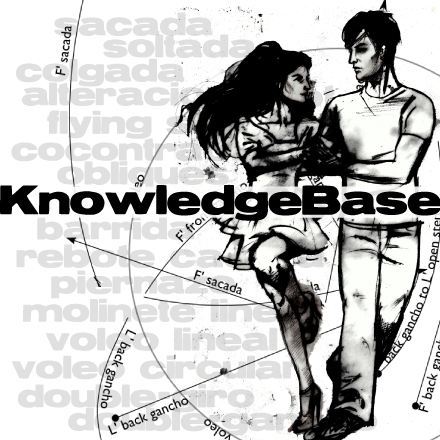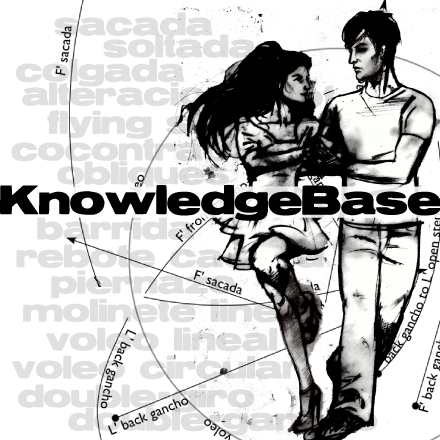A parada is a stop, which can happen at any point in the transfer of a step.
It’s also possible to stop a pivot; see pivot-parada.
In truth we shouldn’t think of parada as a distinct movement because the process of transfer involves a control system: the extension of the joints of the old base leg. We can decelerate or pause at any point simply by arresting the extension of knees and ankle.
Any sacada can be transformed into a parada. This is a great set-up for ganchos.
Once stopped, the revel waits, ready for anything. She needs to keep the muscles in her arc ready for action, and she can do this by gently contracting almost any muscle in either leg, which will trigger a chain of muscles.
What to do with a parada?
- Move her back and forth, playfully
- Pivot on two feet
- Set up for gancho
- Sandwichito by the Mark
- Redirect her projection several times
- Barrida
If her weight is split between both feet the Mark must be sure to redirect the arch to one or the other foot before marking the next movement.
If the Mark’s foot is touching the Revel’s foot, the customs of tango say that she must do her best to maintain the contact. He can break the contact by taking away his foot, marking another projection, or moving the arch of connection to a place where it’s not possible for her to maintain contact without breaking her arc. This rule is fundamental for the transition from parada to barrida.














